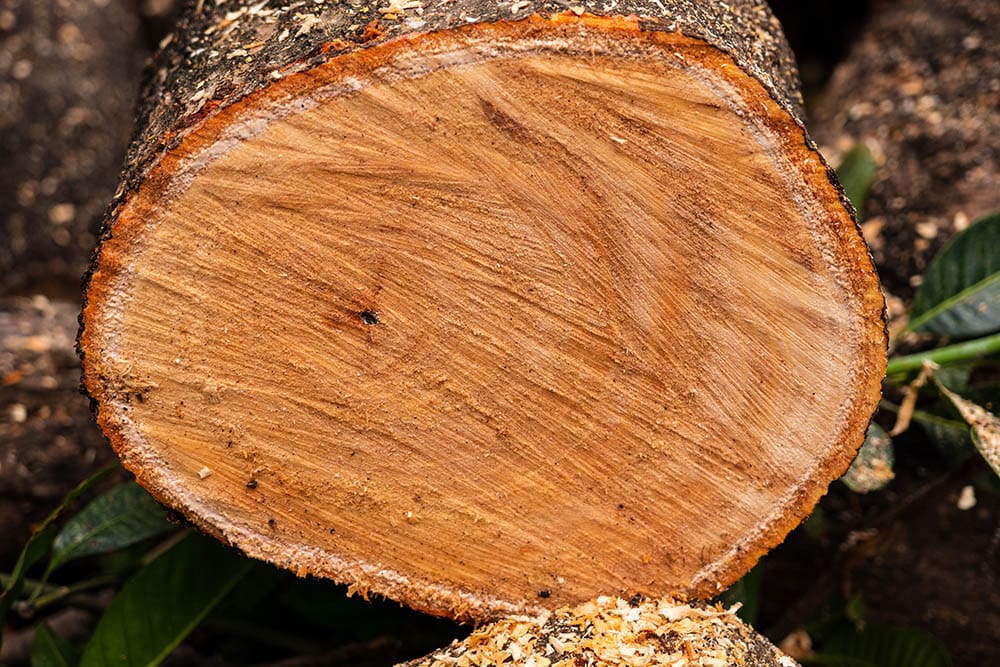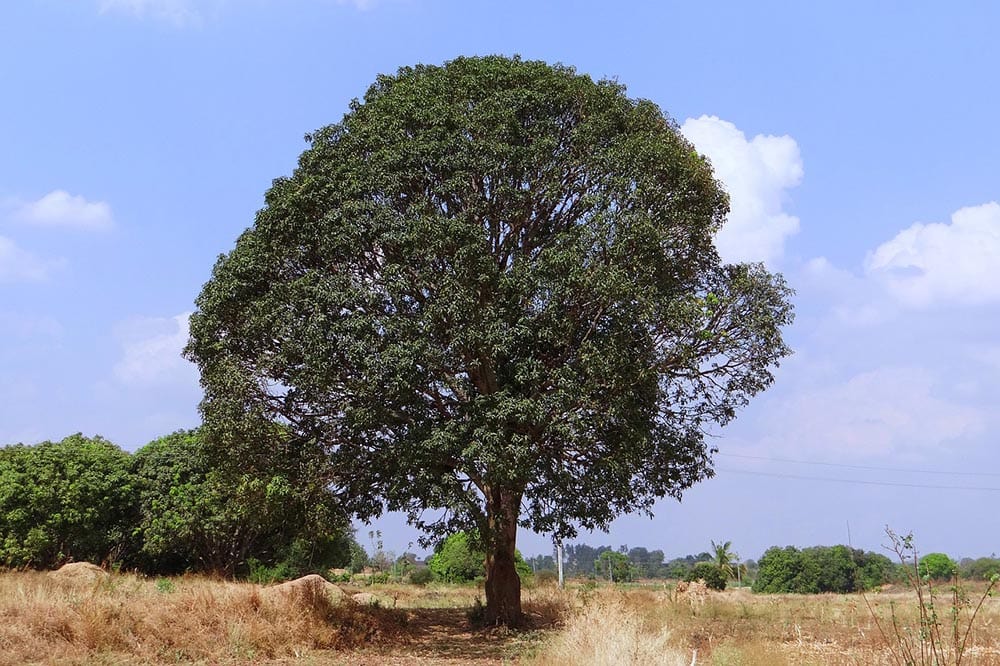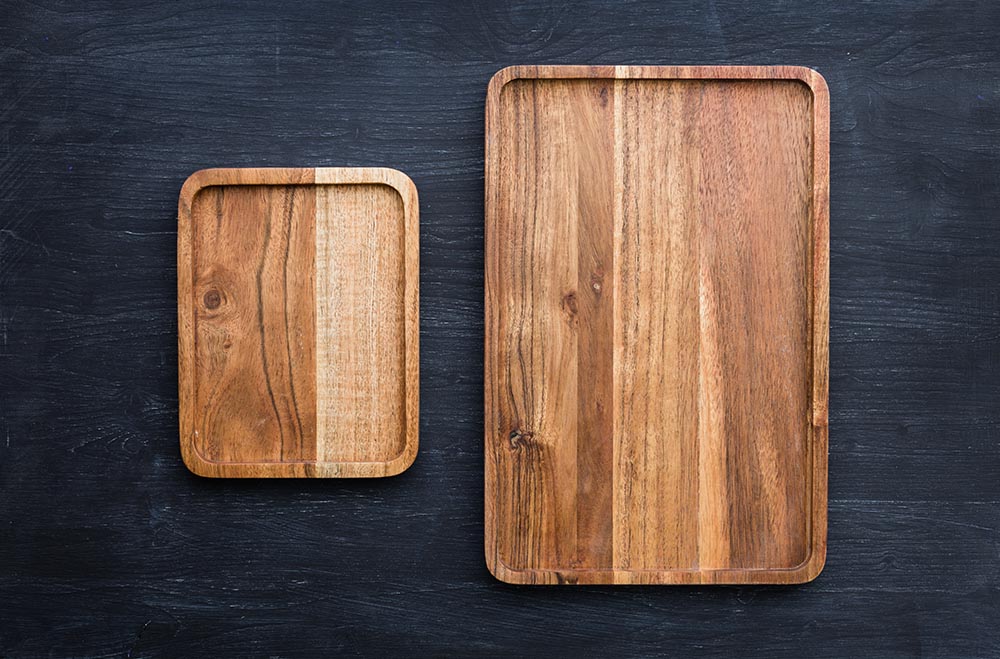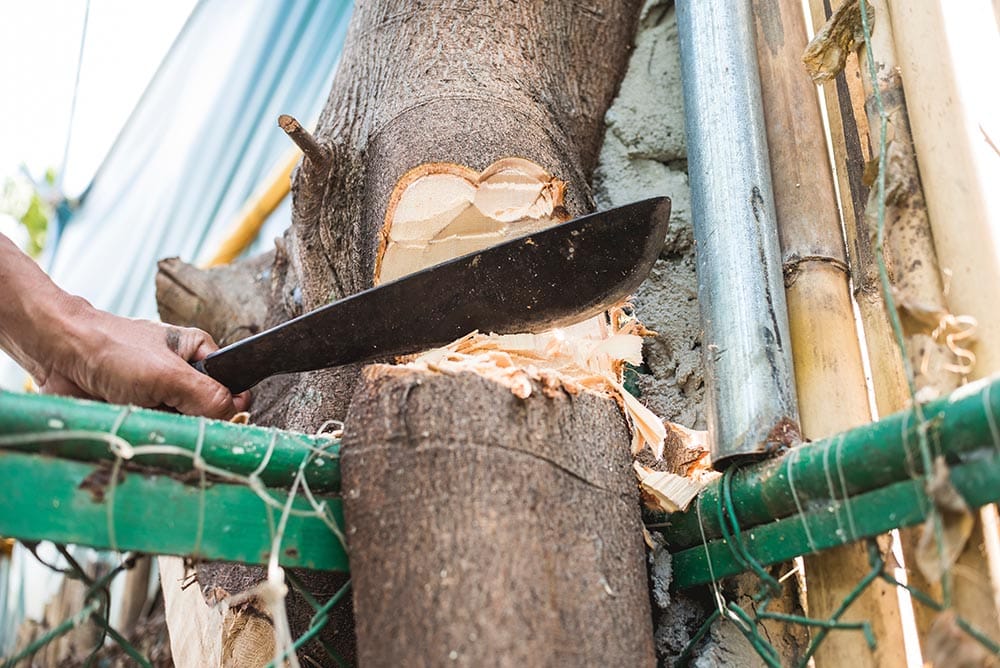What is Mango Wood? Properties, Characteristics & Uses
-
- Last updated:

As a homeowner, choosing long-lasting wood for construction, furniture, and other home designs is vital. Unfortunately, most people rarely consider other hardwood trees apart from oak, maple, and cypress. If you fall in this category, you should consider using mango wood. Although famously known for its fruit, this hardwood tree can be used in construction.
Mango wood, which goes by its scientific name, Mangi Indica, typically grows in tropical areas where the temperatures are not too cold. It grows successfully in areas such as Asia, Mexico, and Australia. One of the reasons you should consider using mango wood instead of oak, maple, and mahogany is that it takes only 7–15 years to mature fully. It also has a unique pattern that makes it appealing when used to make furniture.
In this article, we’ll explore everything you need to know about this wood, including the characteristics, properties, and uses of mango wood that makes it a great choice in construction and furniture-making. Let’s dive in!

The 5 Properties of Mango Wood
Mango wood is perfect for construction and furniture because of its unique properties, most of which are popular with other hardwoods.
1. Appearance
Compared to other hardwoods, the appearance of mango wood is pretty unique. When unprocessed, it has a dark brown outer bark. When used in its unprocessed form, the furniture has a rough golden brown appearance. On the other hand, the inner part is paler than the outside and appears to be a lighter shade of pink/ brown.
2. Grain
Most of the time, mango wood has irregular spaced dark spots and lines that are consistent throughout the surface of the wood. These patterns constitute the grain, which is unique to mango wood and is rarely found in other hardwoods.

3. Toxicity Levels
There are no reported cases of lethal poisoning from mango wood, unlike Rosewood and Teak, which can cause nausea and asthma when inhaled. The toxicity levels are very low and only lead to irritation in sensitive skin.
However, contact with the sap or raw bark can result in dermatitis, irritation, swelling, and blistering. To prevent this, the wood should be processed before being used for construction.
4. Hardness
Since it ranks 1070 on the Janka hardness scale, mango wood is considered a soft hardwood. It is at the same level as black cherry wood and ash wood, making it perfect for creating durable furniture. Although it’s difficult to shape and cut due to its hardness scale, it is one of the softest hardwoods, making it suitable for construction.
5. Colour
Mango wood has a golden brown core or heartwood. However, it may be a pink or pale red, sometimes accompanied by black or brown streaks.

The 3 Characteristics of Mango Wood
Some of the Mango wood characteristics that make it perfect for construction include durability, low maintenance, and a low maturity period. Here’s a quick overview of these characteristics.
1. Durability
Since mango wood is a hardwood, it can go for a long time without getting damaged, making it durable compared to other hardwoods such as Ashwood and Oak. It also does not wear out quickly and ages beautifully, so your furniture will look good after years of use. This mango wood characteristic is why many homeowners prefer to use it.
2. Water-Resistant
To a large extent, mango wood is water-resistant, making it perfect for creating an outdoor deck, bathroom furniture, flooring, and any other outdoor furniture. Polishing the wood makes it more water-resistant.
3. It Has a Short Maturity Period
Unlike hardwood trees such as oak, which take more than 20 years to mature, mango wood only takes a few years.
If you are concerned about the impact of development, tree cutting, and CO2 emissions and are considering going green, then this is an excellent option for you. Mango wood trees are cut down after they have stopped bearing fruit and reach almost 20 meters, which takes about 15 years.
Mango wood is mainly grown for the fruits, so it can have multiple uses instead of planting the trees solely for wood.

The 7 Uses of Mango Wood
Unlike some hardwoods such as oak, mango wood is pretty easy to carve and shape, making it great for making furniture and home decor. Some of the top uses of mango wood include:
1. Outdoor Furniture
Using mango wood to make outdoor furniture is a perfect move due to its water-resistant quality. It reduces the chances of the benches, picnic tables, and other outdoor furniture getting waterlogged and developing rot.
2. Large Furniture
Mango wood is pretty light for hardwood and is excellent for making large pieces since moving them is easier. Beds, dining tables, and display pieces made from mango wood are also aesthetically pleasing. It’s also an excellent investment since it’s guaranteed to last longer than other wood types.
3. Doors and Window Frames
Your front door and window panes make a significant impact on the general appearance of the home. Using mango wood ensures that the doors have a distinct color and unique pattern, making them stand out.
4. Kitchen Accessories
The hardness and density of mango wood make it perfect for making chopping boards, bowls, serving trays, and salad serves. It is also ideal for making kitchen countertops due to its durability and water resistance.

5. Musical Instruments
Mango wood is easy to shape and can be used to make musical instruments such as flutes and guitars. The durability of mango wood also means that they are guaranteed to last a long time without damage.
6. Flooring
Since its water resistance, mango wood can be made to make both outdoor and indoor flooring. You should, however, note that it’s not long-lasting when used for flooring.
- Related Read: 15 Flooring Trends: Design Ideas for a Modern Home
7. Veneers
Mango wood is used as a veneer for items made from low-quality wood to give them a high-quality hardwood look. The reason for doing this is to enhance the appearance of low-quality furniture.

The 5 Reasons Why You Should Use Mango Wood
Not sure whether mango wood is ideal for you? Here’s why you should consider it:
1. It is Affordable
Since mango wood is sustainable and primarily grown as a fruit tree, it is more affordable than other hardwoods. Most farmers sell it to clear land to plant a new batch of mango trees, and you can purchase 1-inch-thick mango wood for as low as $5. Also, once the tree is felled, it does not require much processing, lowering production costs.
2. Aesthetically Pleasing
The grain and color of the mango wood are very distinct, which helps make the furniture beautiful. Also, furniture with a natural pale red or pink color stands out in any setting.
3. Low Maintenance
Unlike most softwoods and some hardwoods, mango wood does not require expensive processing. Cleaning is also quite simple, especially once it’s polished and waxed; all you have to do is pass a moist cloth on the furniture’s surface.

4. Stains Well
Mango wood is an excellent material to use if you intend to stain your décor or furniture. It responds beautifully to wood staining, highlighting its natural color and defining its most pleasing patterns. Also, the fact that it is densely grained means it can be polished well.
5. Has a Vintage Look
Its mottled and curly grain pattern makes mango wood look faded, perfect for making antique-looking furniture. Any pieces made from this wood look straight out of the Victorian area.

FAQs
Is it difficult to properly care for mango wood?
No. On the contrary, compared to other types of wood used in furniture-making, caring for mango wood is relatively easy.
Do termites attack mango wood?
Termites attack most unprocessed wood, and mango wood is not an exception to this. To prevent your furniture from being attacked by termites, treat and wax it before using it.
Are there any drawbacks when using mango wood?
As with other hardwoods, there are a few drawbacks when using mango wood. For one, it is highly likely to get dehydrated during dry weather; when this happens, the furniture can form cracks and break easily. It is also susceptible to attack from fungus and causes skin irritations and allergies for those with sensitive skin.

Final Thoughts
Using mango wood for construction might be the most affordable option if you live in a tropical country. Furniture made from mango wood is durable and can last several generations. It is also an eco-friendly choice since farmers harvest mango wood after 7 to 15 years.
Mango wood can also be shaped and carved easily according to specific guidelines and preferences. The ease of shaping paired together with the unique aesthetic beauty of furniture from mango wood makes it a popular choice.
- You might also like: What is Cocobolo Wood? Properties, Characteristics, & Uses
- https://designingidea.com/mango-wood-furniture-pros-and-cons/
- https://www.childrens.health.qld.gov.au/poisonous-plant-mango-mangifera-indica/
- https://designingidea.com/mango-wood-furniture-pros-and-cons/
- https://kernigkrafts.com/blog/need-know-mango-wood/#
- https://www.grainandframe.com/buying-guides/mango-wood-what-is-it-and-what-are-the-benefits-of-mango-wood-furniture/
Featured Image Credit: TamuT, Shutterstock
Contents

